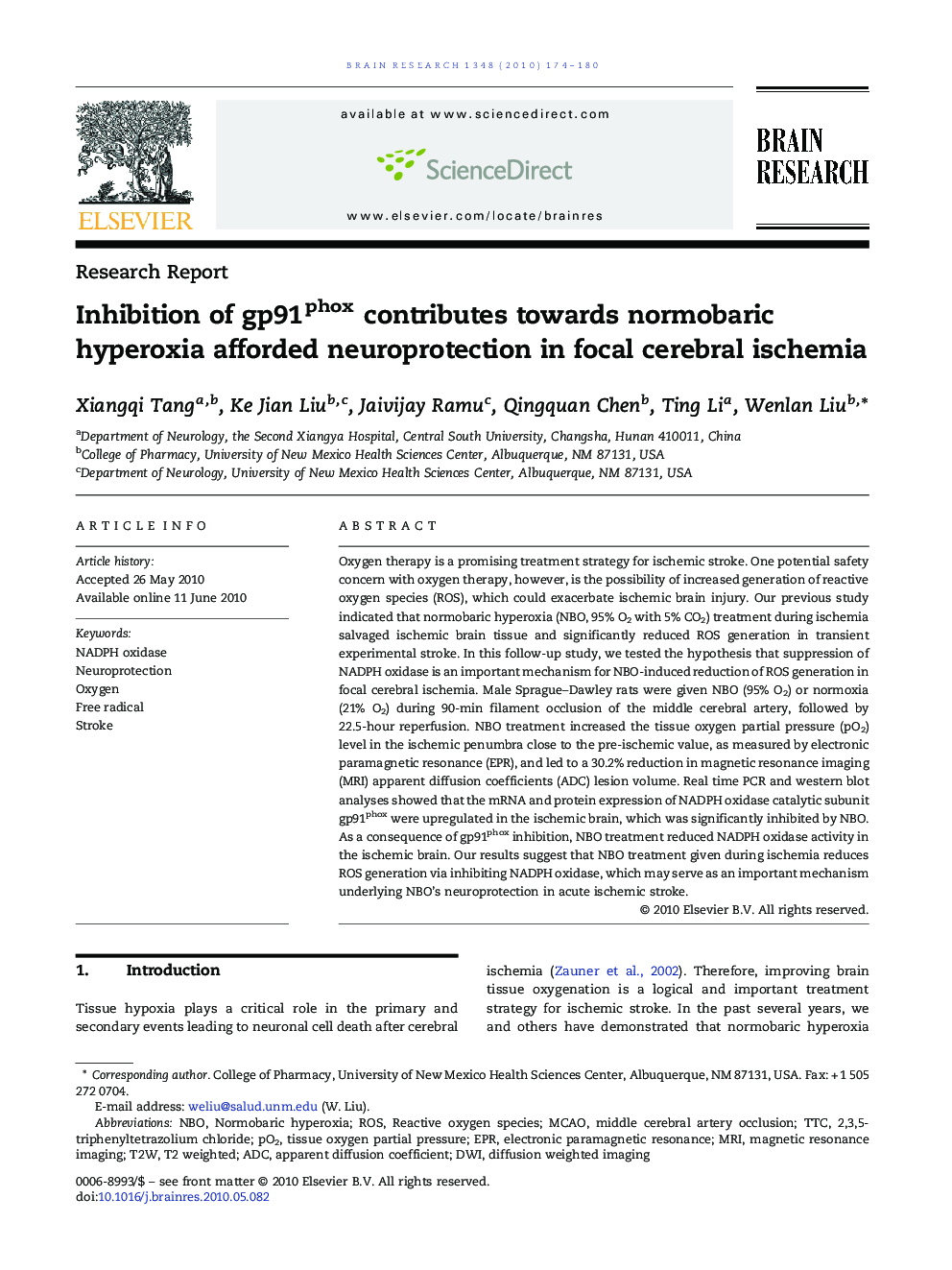| Article ID | Journal | Published Year | Pages | File Type |
|---|---|---|---|---|
| 4326725 | Brain Research | 2010 | 7 Pages |
Oxygen therapy is a promising treatment strategy for ischemic stroke. One potential safety concern with oxygen therapy, however, is the possibility of increased generation of reactive oxygen species (ROS), which could exacerbate ischemic brain injury. Our previous study indicated that normobaric hyperoxia (NBO, 95% O2 with 5% CO2) treatment during ischemia salvaged ischemic brain tissue and significantly reduced ROS generation in transient experimental stroke. In this follow-up study, we tested the hypothesis that suppression of NADPH oxidase is an important mechanism for NBO-induced reduction of ROS generation in focal cerebral ischemia. Male Sprague–Dawley rats were given NBO (95% O2) or normoxia (21% O2) during 90-min filament occlusion of the middle cerebral artery, followed by 22.5-hour reperfusion. NBO treatment increased the tissue oxygen partial pressure (pO2) level in the ischemic penumbra close to the pre-ischemic value, as measured by electronic paramagnetic resonance (EPR), and led to a 30.2% reduction in magnetic resonance imaging (MRI) apparent diffusion coefficients (ADC) lesion volume. Real time PCR and western blot analyses showed that the mRNA and protein expression of NADPH oxidase catalytic subunit gp91phox were upregulated in the ischemic brain, which was significantly inhibited by NBO. As a consequence of gp91phox inhibition, NBO treatment reduced NADPH oxidase activity in the ischemic brain. Our results suggest that NBO treatment given during ischemia reduces ROS generation via inhibiting NADPH oxidase, which may serve as an important mechanism underlying NBO's neuroprotection in acute ischemic stroke.
